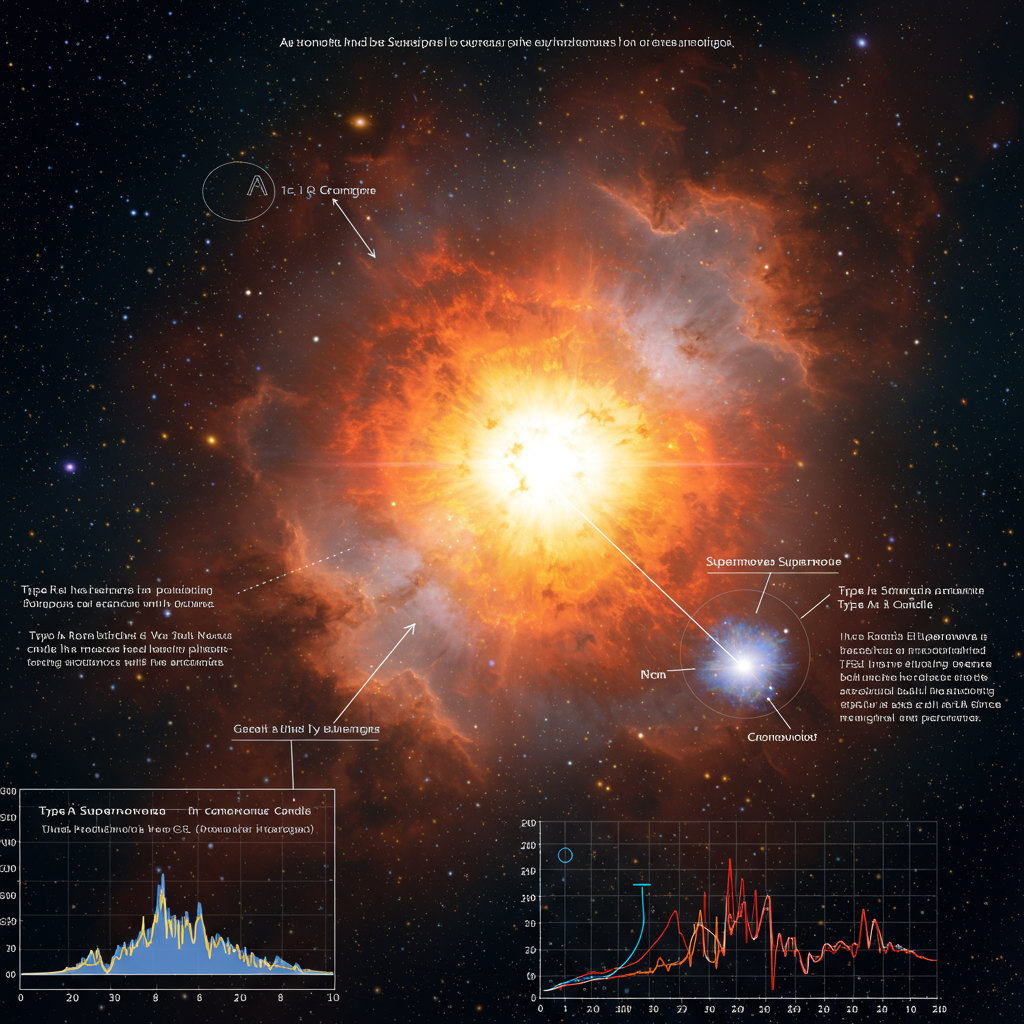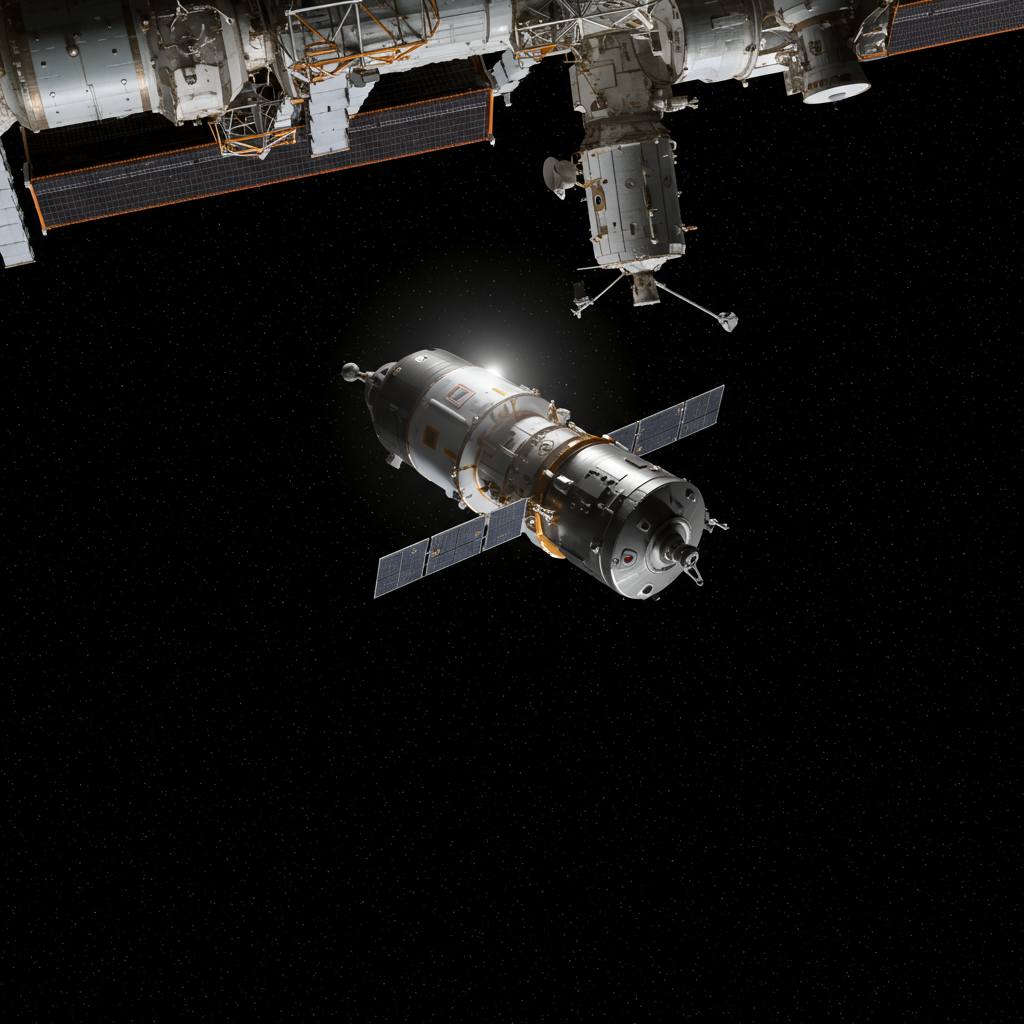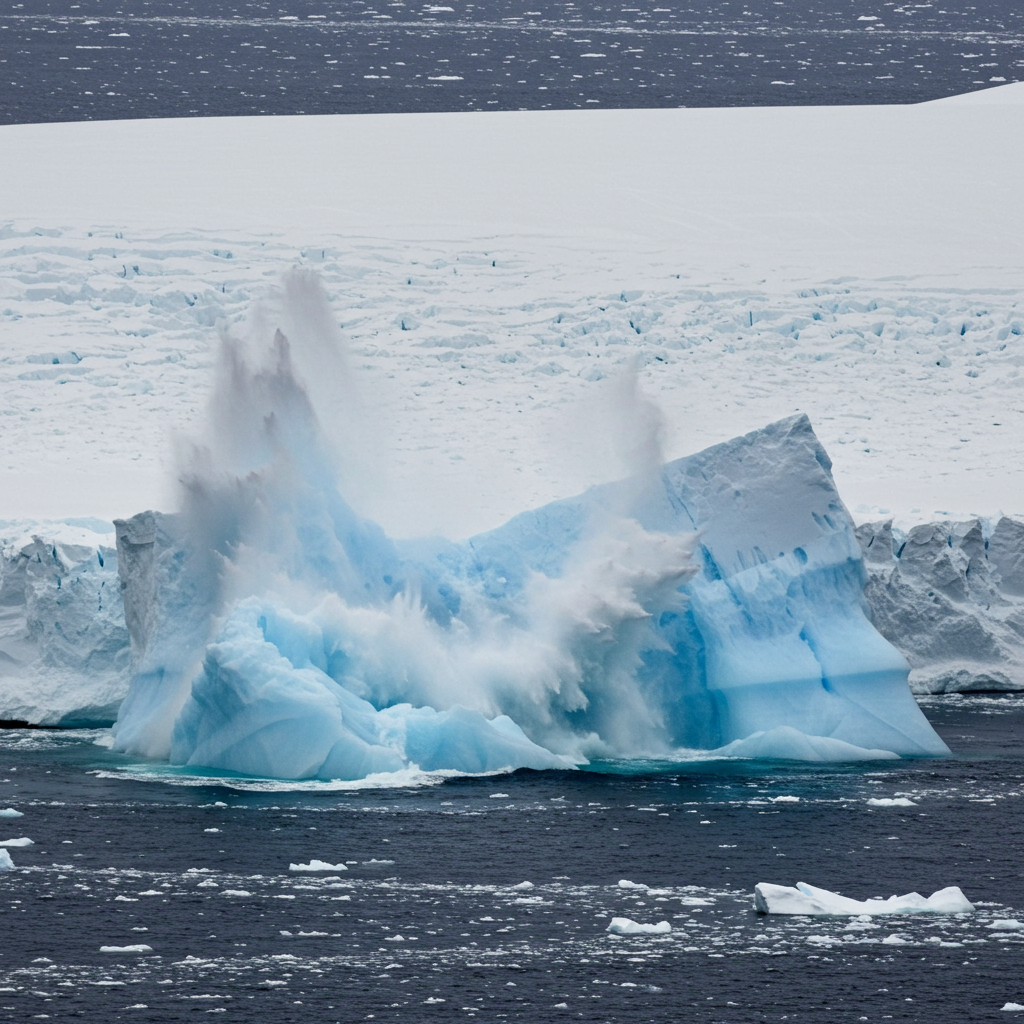Unlocking the secrets of cosmic explosions is key to understanding our universe. For decades, Type Ia supernovae have been essential tools for measuring vast cosmic distances and studying the mysterious dark energy driving the universe’s accelerating expansion. They are also the universe’s primary source of iron, an element fundamental to rocky planets like Earth. Yet, despite their critical role, the precise mechanisms triggering these powerful stellar blasts have remained a significant puzzle in astrophysics.
The Mystery of Exploding white Dwarfs
Type Ia supernovae originate from white dwarfs. These are the dense, compact remnants left behind when stars similar to our Sun exhaust their nuclear fuel. Unlike the supernovae from massive stars collapsing, Type Ia events involve these smaller, inert stellar cores, typically found in binary systems.
The long-standing, classic model suggests a white dwarf gradually pulls matter from its companion star. This accretion continues until the white dwarf reaches a critical mass limit, roughly 1.4 times the mass of our Sun. At this point, known as the Chandrasekhar limit, the extreme pressure ignites thermonuclear runaway, resulting in a single, colossal explosion.
Challenging the Classic View
However, mounting observational data has begun to challenge this single-explosion, fixed-mass picture. Astronomers have observed unexpected diversity among Type Ia supernovae, including variations in their brightness and expansion velocities. Reproducing this observed range, particularly the relationship between a supernova’s brightness and how quickly it fades (the width-luminosity relation), seems problematic with a fixed explosion mass. Furthermore, the rate at which binary systems are expected to reach the Chandrasekhar limit appears too low to account for the observed frequency of Type Ia supernovae.
These challenges have prompted a search for alternative trigger mechanisms. One leading alternative scenario involves white dwarfs exploding before reaching the Chandrasekhar mass limit.
The Double-Detonation Hypothesis
The most promising alternative mechanism is the “double-detonation” scenario. In this model, a white dwarf, typically less massive than the Chandrasekhar limit, is in a binary system and accretes helium-rich material onto its surface, forming a distinct outer layer or shell.
This helium layer is highly reactive. As it grows, it can become unstable and ignite first. This initial, smaller detonation on the surface creates powerful shockwaves. These shocks propagate both outward and, crucially, inward through the white dwarf. The inward-traveling shockwave compresses the core material – usually carbon and oxygen – triggering a second, much more energetic detonation within the white dwarf’s interior. This two-step process results in the complete destruction of the star.
Cosmic Fingerprints in Supernova Remnants
Theoretical simulations of the double-detonation mechanism make specific predictions about the elemental composition and structure of the exploding white dwarf’s ejecta. Because the core and the helium shell are made of different fuels and ignite at different densities, the nuclear burning products are predicted to be distinct and spatially separated.
In the denser core, burning produces heavier elements like iron and nickel closer to the center, with intermediate-mass elements (IMEs) like silicon, sulfur, and calcium further out at decreasing densities. In the less dense helium shell, burning produces lighter IMEs. Critically, simulations predict that calcium should be abundant at the base of the helium shell.
Putting these together, double-detonation models predict a unique “fingerprint”: calcium should be concentrated in two distinct layers within the expanding debris – an inner layer from the core and an outer layer from the helium shell. Lighter IMEs, like sulfur, are predicted to be located in between these two calcium shells.
Seeking Direct Evidence
For years, observational support for the double-detonation model has been indirect. Astronomers have studied high-velocity features (HVFs) of elements like calcium and silicon in the early spectra of Type Ia supernovae. These features, seen at velocities higher than the main body of the ejecta, have been suggested as potential signatures of the helium shell detonation. However, interpreting these spectral features relies heavily on complex modeling, and alternative explanations, such as interaction with circumstellar material or density enhancements unrelated to a double detonation, also exist. Furthermore, during the initial supernova phase, the expanding star is too small and opaque to resolve the predicted internal layered structure directly.
This changed with a new approach: looking at supernova remnants centuries after the explosion.
A Window into the Past: Observing SNR 0509-67.5
The new research focused on the supernova remnant SNR 0509-67.5. Located in the nearby Large Magellanic Cloud, this remnant is relatively young, estimated to be only about 300 to 350 years old. Light echo observations have previously identified its parent supernova as a luminous, “1991T-like” Type Ia event. Importantly, SNR 0509-67.5 is expanding into a low-density environment, which preserves the structure of the ejecta well into the remnant phase.
Using the Multi Unit Spectroscopic Explorer (MUSE) instrument on the European Southern Observatory’s (ESO) Very Large Telescope (VLT), researchers conducted exceptionally deep observations of the remnant’s reverse-shocked ejecta. As the remnant expands, an inward-traveling reverse shock wave heats and ionizes the ejected material, causing it to emit light at specific wavelengths depending on the elements present. By analyzing this emission with MUSE’s integral field spectroscopy capabilities, the team could effectively create a 3D map of the elements within the remnant.
Uncovering the Double Calcium Signature
The key discovery within SNR 0509-67.5 was the direct detection of a double-shell structure in the emission of highly ionized calcium ([Ca XV]). Simultaneously, they observed a single shell of sulfur ([S XII]) emission. These observed shell structures provide a “photographic snapshot” of the material distribution within the supernova ejecta hundreds of years after the explosion.
Analysis showed the inner calcium shell peaking at a radius of approximately 1.73 parsecs from the remnant’s center, and the outer calcium shell peaking at roughly 2.06 parsecs. The sulfur emission was found to peak spatially between the two calcium shells, located closer to the outer one.
This specific configuration – two distinct calcium shells with sulfur in between – qualitatively matches the predicted structural morphology from double-detonation hydrodynamical simulations. While not an exact quantitative fit (as the observed remnant is centuries older than the simulation epoch), the qualitative agreement of the layered structure is a powerful indicator.
Eliminating Alternative Explanations
Could this apparent double shell simply be a projection effect from different parts of a single expanding spherical shell? The researchers ruled this out by analyzing the Doppler shifts of the calcium emission from the inner and outer shells. If they were just projected parts of a single shell, significant differences in velocity (and thus Doppler shift) would be expected. The observed small differences in Doppler shift indicate that these are indeed two physically distinct, separate shells, seen limb-brightened as predicted by the double-detonation model.
Further analysis also suggested that the observed layered structure is due to the original elemental stratification from the explosion, rather than being solely an effect of the reverse shock ionizing different layers differently. The conditions required for [Ca XV] and [S XII] ionization suggest that abundance differences are the primary cause of the observed morphology.
Direct Proof of a Double-Detonation
This direct, spatially resolved observation of the predicted double-shell calcium structure within SNR 0509-67.5 provides compelling evidence. It is the first direct “photographic” confirmation from a supernova remnant that the double-detonation mechanism occurs in nature.
This finding supports the idea that some luminous Type Ia supernovae, like the one that produced SNR 0509-67.5, are likely caused by the double detonation of a sub-Chandrasekhar-mass white dwarf, specifically one with a thin helium shell. This helps resolve the long-standing debate about whether sub-Chandrasekhar explosions are feasible Type Ia triggers.
The Power of Remnant Tomography
The study underscores the unique potential of supernova remnant tomography. While the early phases of a supernova are opaque, making it impossible to see the internal structure, remnants offer a window into the explosion’s nucleosynthesis and elemental distribution centuries later, after the ejecta have expanded and become transparent to observation.
Future studies employing detailed forward modeling of remnant evolution, which calculates how the ejecta’s ionization and excitation structure changes over hundreds of years, hold great promise. Applying these methods to other young Type Ia supernova remnants could further unravel the diverse origins and explosion mechanisms that give rise to these crucial cosmic events.
Looking Ahead
While this observation confirms the feasibility of the double-detonation mechanism, questions remain about the precise evolutionary pathways that lead to it. Both single-degenerate scenarios (where a white dwarf accretes from a normal star) and double-degenerate scenarios (involving the merger of two white dwarfs) could potentially lead to a double detonation. Recent simulations even explore complex scenarios like a “quadruple detonation” where both white dwarfs in a merger detonate. Differentiating between these possibilities will require more sophisticated modeling and observations.
This discovery marks a significant step towards fully understanding Type Ia supernovae, reinforcing their importance as cosmological probes and shedding light on the violent processes that forge elements in the cosmos.
Frequently Asked Questions
What is the double-detonation mechanism for supernovae?
The double-detonation mechanism is a proposed way for a white dwarf star to explode as a Type Ia supernova. It involves a white dwarf in a binary system accreting a layer of helium on its surface. This helium layer ignites first in a small detonation. This initial explosion sends a shockwave inward, compressing the white dwarf’s core and triggering a second, much larger thermonuclear detonation there. This process can occur in white dwarfs with masses below the traditional Chandrasekhar limit.
How did observing calcium in SNR 0509-67.5 provide evidence for this?
Astronomers used the VLT’s MUSE instrument to map the elements in the supernova remnant SNR 0509-67.5. They discovered that highly ionized calcium was distributed in two distinct, concentric shells within the remnant’s expanding debris, while sulfur formed a single shell between the calcium layers. This specific double-shell calcium structure, with sulfur positioned in between, matches theoretical predictions for the elemental distribution left behind by a double-detonation explosion, serving as a unique “fingerprint” for this mechanism.
Why is understanding Type Ia supernova triggers important for astronomy?
Type Ia supernovae are crucial for cosmology because they serve as “standard candles” – their peak brightness is predictable, allowing astronomers to calculate their distance. This enables the measurement of vast cosmic scales and the study of the universe’s expansion, including the discovery of dark energy. Understanding the different trigger mechanisms helps explain the variations observed in Type Ia supernovae and refines their use as precise cosmic distance indicators, while also revealing how elements like iron are produced and dispersed throughout galaxies.




